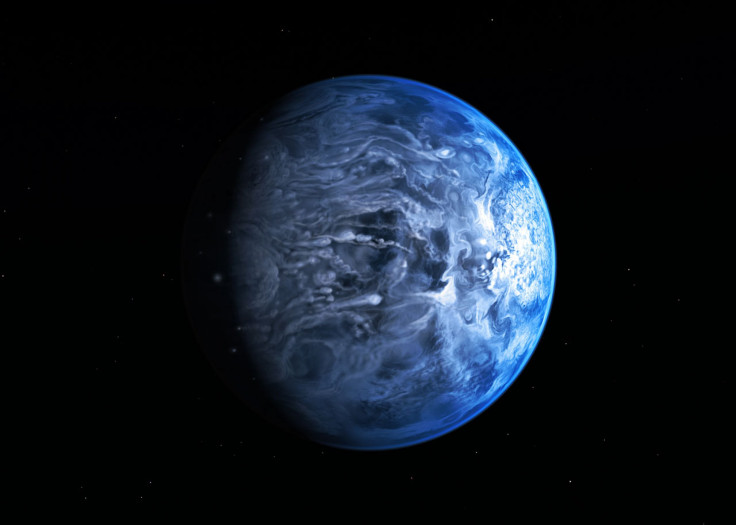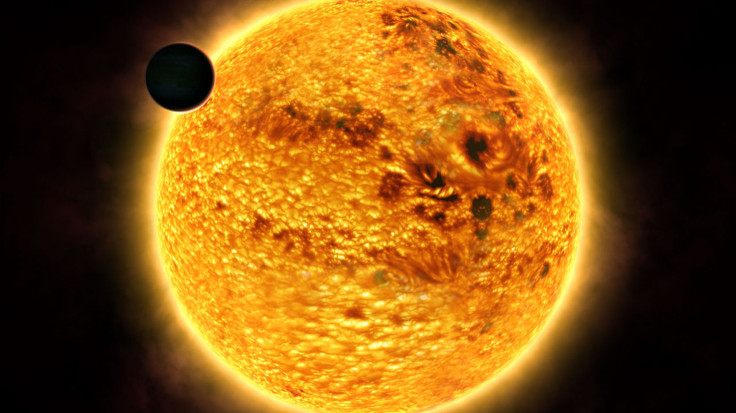Meet The New Blue Planet: NASA Hubble Telescope Reveals Exoplanet HD 189733b’s True Color [PHOTO]
NASA’s Hubble Space Telescope has captured an exoplanet’s true color. HD 189733b has an azure color that’s similar to Earth’s, but there is no chance the planet holds life as it orbits extremely close to its host star.

HD 189733b is a gas giant with an atmospheric temperature exceeding 1,000 degrees Celsius (1,832 degrees Fahrenheit), and some rather cruel weather. As NASA notes, HD 189733b is dominated by high winds that can reach speeds of 7,000 kilometers (4,350 miles) per hour, and it rains glass (!), based on previous data collected by NASA’s Spitzer Space Telescope. The azure planet is one of the closes exoplanets to Earth, just 63 light-years away, which makes it a prime candidate for research using Hubble or other telescopes.
Using Hubble, NASA scientists were able to measure how much radiation is reflected by the planet’s surface, called albedo. Based on the albedo ratio, the more radiation given off the more light is reflected. Scientists used Hubble’s Space Telescope Imaging Spectrograph to determine the planet’s true color, notes NASA. Scientists recorded data as the planet passed in front of its star and as it orbited behind it, in order to eliminate starlight that could interfere with light reflecting off the planet’s surface.
While the planet was obscured from view as it traveled behind its star, scientists were able to detect a drop in the amount of light produced by the system that fell within the blue spectrum , notes NASA. Lead author Tom Evans, from the University of Oxford, said, “We saw the brightness of the whole system drop in the blue part of the spectrum when the planet passed behind its star,” while noting that other parts of the color spectrum that were measured remained constant, indicating no change.

The planet’s azure color is due to atmospheric silicate particles that scatter blue light. Previous data collected by Hubble revealed HD 189733b’s red sunset was caused by haze in the atmosphere. Scientists often have difficulty determining the color of a planet’s atmosphere, which makes the HD 189733b research even more important. NASA points out that the colors of Jupiter and Venus’ atmospheres are caused by unknown particles.
Frederic Pont, from the University of Exeter and an author on the study, said in a statement, “These new observations add another piece to the puzzle over the nature and atmosphere of HD 189733b. We are slowly painting a more complete picture of this exotic planet.”
NASA classifies the planet a “hot Jupiter,” due to its relative size and close proximity to its star, and it is an ideal research candidate for scientists as they search for exoplanets. Hot Jupiters can be found throughout the universe and previous research has indicated gas giants, in general, like to stay close to their parent stars.
© Copyright IBTimes 2024. All rights reserved.





















